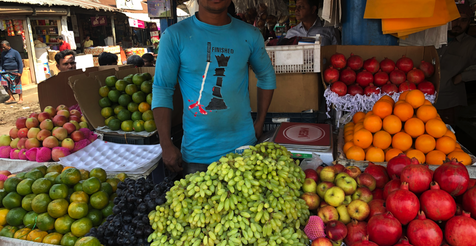Food Access for All: Innovation Takes Over

When probing a bit on this question, we realized that access isn’t always the issue, nor is cost.
Food safety and reliability, as well as maintaining the freshness of food, were the real culprits in the lack of fruits, vegetables and other healthy items in factory canteens.
During our discussions, we learned of a project in India providing milk to underserved communities, that has been useful in combatting issues of food safety, reliability, access AND cost.
The project, run by Amul Dairy, is the installation of a series of dairy ATMs (as in automatic teller machines, similar to snack machines, or money machines). The milk comes out of the machine in pouches, and is cheap enough so affordability is not a challenge. If you’ve visited Japan, seeing non-traditional snack items in a vending machine is no surprise. In Japan you can get almost anything from an ATM – drinks, pizza, movies, books, flowers electronics and the list goes on. What’s different about the Amul ATMs, however, is that the milk is inexpensive, chilled at the right temperature, available 24 hours a day and provides much needed nutrition and sustenance for its customers.
The Amul milk ATM was launched in 2014, and appears to be flourishing across India. Similar vending systems have popped up in Kenya (along with salad ATMs!).
Providing access to food in this way, along with other items like personal care products, soap and even water, is becoming useful, affordable and dependable for rural communities.
On March 21st I’ll be attending the Chicago Council for Foreign Affairs Food Security Symposium, where speakers will address the following question: How will we grow an adequate quantity—and quality—of food to feed and nourish a rapidly growing, urbanizing world in the face of increasing water insecurity? Innovation is enabling greater food and product accessibility, and will most certainly continue as communities consider the best methods for feeding their residents, employees, families and future generations. I look forward to hearing how the panelists address this question, and how they see innovation and technology, like the use of vending systems, for example, helping to solve the challenges we face.


